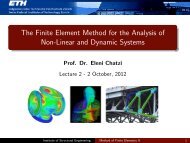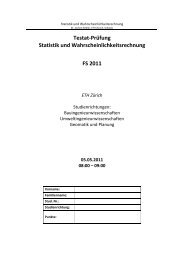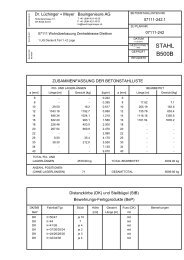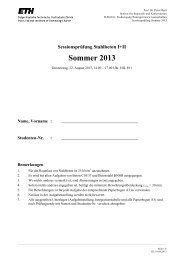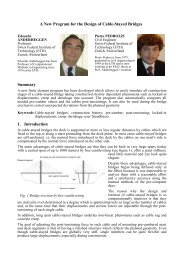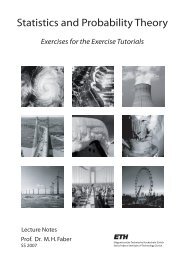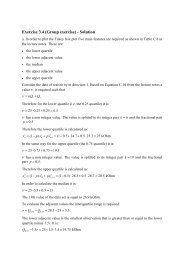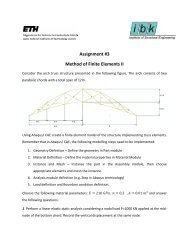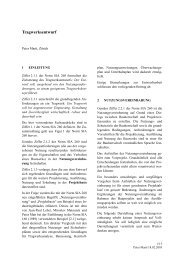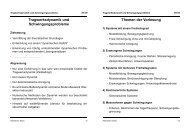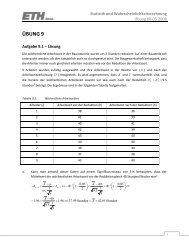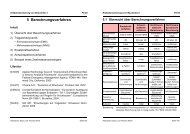The Finite Element Method for the Analysis of Non-Linear and ...
The Finite Element Method for the Analysis of Non-Linear and ...
The Finite Element Method for the Analysis of Non-Linear and ...
You also want an ePaper? Increase the reach of your titles
YUMPU automatically turns print PDFs into web optimized ePapers that Google loves.
Relaxation<br />
A relaxation test is defined as <strong>the</strong> stress response due to a constant strain <strong>for</strong> a<br />
period <strong>of</strong> time. In viscoplastic materials, relaxation tests demonstrate <strong>the</strong> stress<br />
relaxation in uniaxial loading at a constant strain. <strong>The</strong> decompositon <strong>of</strong> strain<br />
rate is dε<br />
dt = dεe<br />
dt + dεvp<br />
dt<br />
<strong>The</strong> elastic part <strong>of</strong> <strong>the</strong> strain rate is given by dεe<br />
dt = dσ<br />
E−1<br />
dt<br />
For <strong>the</strong> flat region <strong>of</strong> <strong>the</strong> strain-time curve, <strong>the</strong> total strain rate is zero.<br />
Hence we have, dεvp dσ<br />
−1<br />
= −E<br />
dt<br />
dt<br />
<strong>The</strong>re<strong>for</strong>e <strong>the</strong> relaxation curve can be used to determine rate <strong>of</strong> viscoplastic strain<br />
<strong>and</strong> hence <strong>the</strong> viscosity <strong>of</strong> <strong>the</strong> dashpot in a 1D viscoplastic material model.<br />
Institute <strong>of</strong> Structural Engineering <strong>Method</strong> <strong>of</strong> <strong>Finite</strong> <strong>Element</strong>s II 29



